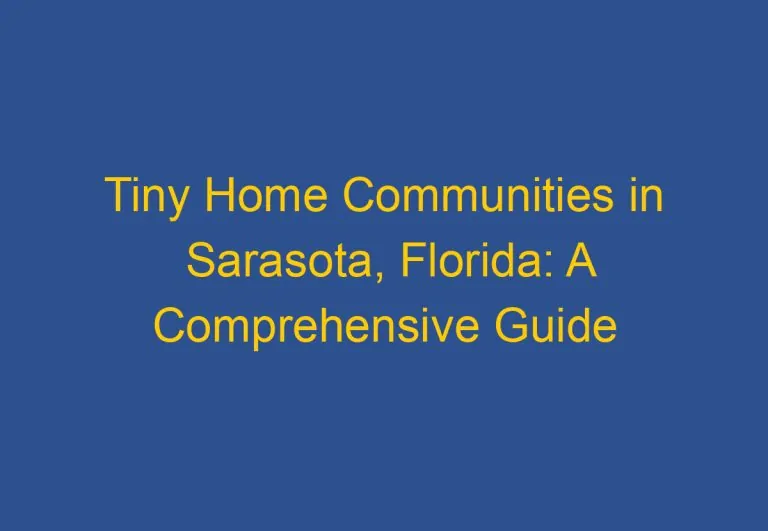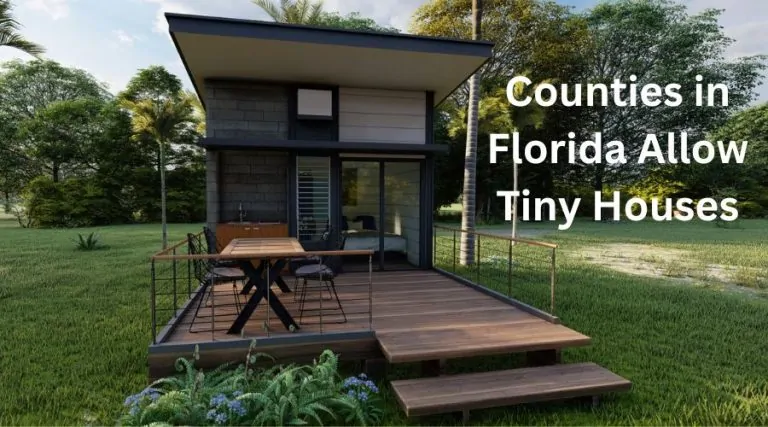Tiny Home for Elderly Parent: A Practical and Affordable Solution
As people age, the need for a comfortable and safe living space becomes paramount. Tiny homes for elderly parents are becoming an increasingly popular option for families looking to provide their loved ones with a comfortable and affordable place to live. These homes are designed to be compact, low-maintenance, and energy-efficient, making them an ideal choice for seniors who are looking to downsize.
Tiny homes are typically smaller than traditional houses, ranging from 100 to 500 square feet. They are designed to be functional and efficient, with every inch of space utilized to its fullest potential. These homes can be customized to meet the specific needs of elderly parents, with features such as grab bars, wheelchair ramps, and low countertops.
There are many benefits to choosing a tiny home for an elderly parent. These homes are often located in the backyard of a family member’s home, providing a sense of security and closeness. They are also much more affordable than traditional homes, making them an ideal choice for seniors who are on a fixed income. Additionally, tiny homes are easy to maintain and require very little upkeep, making them an ideal choice for seniors who may have difficulty with household chores.
Design and Accessibility Features
When it comes to designing a tiny home for an aging loved one, it is important to consider both accessibility and comfort. By incorporating certain design features, you can maximize their independence and ensure their safety.
Maximizing Comfort and Independence
One of the most important factors to consider is the sleeping area. It should be easily accessible and provide enough space for a comfortable bed, without being too cramped. Additionally, storage space should be easily accessible and well-organized, to minimize the need for the elderly person to bend or reach for items.
French doors and large windows can help bring in natural light and provide a sense of openness, while also making it easier for a wheelchair or walker to move around. A single-level layout is also ideal, as it eliminates the need for stairs or steps.
Safety and Medical Considerations
Safety features are crucial when designing a tiny home for an aging loved one. Grab bars should be installed in the bathroom and around the home to provide support and prevent falls. Wide doorways and wheelchair access should be considered to accommodate mobility devices.
A raised toilet and walk-in shower with slip-resistant floors are also important for safety. Additionally, a portable hospital room or medical equipment can be installed for emergency situations. A virtual monitoring system can also provide peace of mind for both the elderly person and their caregivers.
Customization for Aging in Place
Customization is key for aging in place. Granny pods, medcottages, and elder cottages are all options to consider. These are pre-fabricated units that can be installed in the backyard, providing a separate living space for the elderly person while still allowing them to be close to family.
Overall, designing a tiny home for an aging loved one requires careful consideration of their specific needs and preferences. By incorporating accessibility features and prioritizing safety, you can help them maintain their independence and enjoy their retirement years comfortably.
Legal and Financial Considerations
When it comes to building a tiny home for elderly parents, there are many legal and financial considerations to keep in mind. Below are some of the most important factors to consider.
Understanding Zoning and Building Regulations
Before building a tiny home for elderly parents, it is important to understand the zoning and building regulations in your area. Zoning laws can vary from city to city, and some areas may have restrictions on the size and placement of tiny homes. It is important to research the zoning laws in your area to ensure that you are building your tiny home in a legal and safe manner.
Cost and Affordability Strategies
Building a tiny home for elderly parents can be an affordable option, but it is important to consider the costs involved. Some strategies for keeping costs low include building the tiny home off-grid, using solar panels or propane for utilities, and building in a backyard or on existing property to avoid the cost of purchasing land. It is also important to consider the ongoing costs of living in a tiny home, such as utility bills and maintenance costs.
Overall, building a tiny home for elderly parents can be a great option for those looking for an affordable and sustainable housing solution. By understanding the zoning and building regulations in your area and developing cost and affordability strategies, you can ensure that your tiny home is built legally and safely while also keeping costs low.
Frequently Asked Questions
What are the key features to look for in a tiny home suitable for seniors?
When looking for a tiny home suitable for seniors, it is important to consider the accessibility features. The home should have a single-story layout, wide doorways, and a bathroom that is easily accessible. Additionally, the home should have a comfortable and safe living space that is easy to maintain.
How does handicap accessibility vary in tiny homes designed for elderly individuals?
Handicap accessibility in tiny homes designed for elderly individuals varies depending on the specific needs of the individual. Some homes may include features such as wheelchair ramps, grab bars, and lowered countertops. It is important to discuss any specific needs with the builder or seller to ensure that the home is suitable.
What are the legal implications of permanently residing in a tiny home?
The legal implications of permanently residing in a tiny home vary depending on the location and the specific regulations in place. It is important to research local zoning laws and building codes to ensure that the tiny home is compliant. Additionally, it is important to consider the potential impact on property taxes and insurance.
What are ‘mom pods’ and how do they cater to elderly care needs?
‘Mom pods’ are tiny homes designed specifically for elderly care needs. They are typically installed in the backyard of a family member’s home, allowing for close proximity and easy access to care. These homes may include features such as medical monitoring systems, wheelchair accessibility, and safety features such as non-slip flooring.
How can I find tiny homes for seniors that are available for purchase or rent?
There are several ways to find tiny homes for seniors that are available for purchase or rent. Online marketplaces such as Tiny House Listings and Airbnb may have listings for tiny homes suitable for seniors. Additionally, contacting local builders or searching for tiny home communities may provide options.
What options exist for individuals with dementia who are resistant to traditional assisted living?
For individuals with dementia who are resistant to traditional assisted living, there are several options available. ‘Memory care’ tiny homes may provide a safe and comfortable living space with specialized care for individuals with dementia. Additionally, in-home care services may provide care in the individual’s own home.










